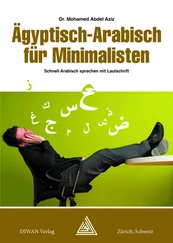ASST. PROF. DR. RAHMI ORUC GUVENC
THE ETERNAL SHEIKH
Aziz Serhat Kural
Copyright © 2021 - Aziz Serhat Kural
Published by Tektime
Cover and book design by Emre Basaran
ACKNOWLEDGEMENT
I owe a debt of gratitude to Yasar Guvenc, Andrea Azize Guvenc, Kanikey Guvenc-Akcay and Emre Basaran for their material and spiritual support during the preparation of this book.
HOW I MET ORUÇ GÜVENÇ
Believe me, it never occurred to me that I would write this book. In fact, when the thought of writing a book about Oruc Guvenc first came to my mind, I asked my friend Emre Basaran, a close associate of Mr. Oruc Guvenc in his musical and spiritual endeavors, whether he might carry out such a project. In reply, he told me that it would be more appropriate if I took care of the matter.
That is why I would like to start with how I met Oruc Bey. It was either 1979 or 80 and I was playing in a chess tournament. A long time has passed since then, so I don’t remember exactly which tournament it was, but I think it was the Musa Tebi Memorial Tournament, where I finished among the top three and received a small monetary prize. At this tournament, I was playing against Ali Ipek, who later went on to win the FIDE Master title1.
Ali made a sidelong attack from his King’s side, deftly capturing my Castle with his Bishop. At that point, I believe he thought he had won the game. But after he captured my Castle, I was able to retrieve the pieces I had lost and improve my position with a particular pawn move. Ali, surprised by my pawn maneuver, had to think long and hard as to what to play next. In the end the game was adjourned. In the late 70s and early 80s there was no internet or personal computers, and smart phones were not yet available. In those days, if a chess game took too long, it was adjourned and continued at a later date determined by the referee. However nowadays, since it is possible to analyze a game with computers, with a few modifications the ‘Guillotine’ or ‘Sudden Death’ system is applied, whereby a player who exceeds the time limit immediately loses the game. Anyway, the game was adjourned, and I was one pawn up. I went home and realized that, despite being a pawn up, I was losing in a problematic fashion. However, I was aware that my opponent might not be able to see this because any normal analysis would have indicated that I was winning.
With many thoughts in my mind, I arrived at the chess center on the day the game was to resume. Ali had also come. We talked and decided between us that the game should end in a draw, without further play. Afterwards, when Ali commented that I could have won, I showed him the intricate moves he could have made to win. He was amazed and sat lost in thought for a while. He then said he wanted to take me somewhere. On the way, he told me that he wanted to introduce me to a Sufi Master.
At that time, I was totally unaware that the ensuing interaction would totally and profoundly affect the rest of my life. On the bus, Ali explained that this person was a great Master and an expert in Sufism, Music and Turkhood. Finally, we arrived at Oruc Bey2’s 3-storied timber villa in Kadirga. If I remember correctly, Ali had a key. We went inside. There was a wooden staircase to the left of the entrance that went up to the first and second floors. The first floor was used most of the time and the rooms on the upper floors were used for specific purposes. We stayed on the first floor where musical instruments were hanging from all the walls, some of which I had never seen before. Some instruments that I found most intriguing lay on the floor looking like mere boxes covered with lots of taut strings, which I later learned to be Indian instruments. It was there, on the first floor, that I first met Oruc Bey.
During a conversation with Oruc Bey

I shall never forget how, on reaching the first floor, we entered the room on the right where I saw him playing ‘El Condor Pasa’ to me on a Shakuhachi (a Japanese flute made from bamboo). I immediately warmed to him and that has continued to increase to this day. It would be no exaggeration to say that our Sheikh-disciple relation started at that very moment.
That evening, or in the following days I don’t quite remember, Ali explained why he took me to meet Oruc Bey. He said that, after the match I mentioned earlier, he had experienced a chronic headache for which aspirin and similar medication did little to help, so he had gone to consult Oruc Bey. According to Ali, Oruc Bey had explained the reason for the headache as follows: “A knot formed in your mind when you thought you had lost your Bishop while playing chess against a long-haired boy with a light beard. This is the reason for your headache. Bring that boy to me, whenever it is convenient for you.”
Yes, that is how I met Oruc Bey, but this book is about Oruc Bey. If this book attracts attention and if there is demand, I would very much like to write about my apprenticeship with him. But my aim in this book is to outline the life and works of Rahmi Oruc Guvenc and provide insight into his teachings. I have no wish to crowd the book with details like dates, places and names.
1A Master Title of the International Chess Federation (FIDE)
2‘Bey’ is used as ‘Mr.’ or ‘Sire/Sir’ in Turkish. However, note that it follows the first name instead of the surname, as in the West.
ETHNIC ORIGINS AND CHILDHOOD
“One side of my family lineage is from Kazan Turks, the other side from Kyrgyz Turks. We would listen to music performed by our family from early childhood and this music (pentatonic music) became essential for me.”3
Before moving on to the musical aspect of Oruc Bey’s life, I want to tell you a little about his ethnic origins. As the above quotation says, Oruc Bey had Central Asian ancestry. His father, Ahmet Kamil Guvenc, was born into a family that migrated from Tatarstan to Tavsanli/Kutahya during the 93 war4. A short biography of Ahmet Kamil Guvenc, written by Yasar Guvenc, elder brother of Oruc Bey and Ahmet Kamil Guvenc’s other son, provides some important details:
“Ahmet Kamil Guvenc was born into a family that had migrated during the 93 war and settled in Hamitabat Village close to Tavsanli5. His father Abdussukur was martyred in the war of the Dardanelles, which was why his they came with their mother to Tavsanli. As a young man, Ahmet Kamil repaired watches and gramophones and he sold bicycles, gramophones and watches. In 1948, he brought out the ‘Tavsanli Post’ (Tavsanli Postasi) newspaper, which was published daily and weekly for over 40 years.
“In 1952, Ahmet Kamil Guvenc established the first printing house in Tavsanli and trained many typographers. He put a lot of effort into developing Tavsanli and started a campaign for the reforestation and reorganization of an area called Mulayim Dede6. He published 2 books, ‘Garden of Thorns 1‘and ‘Garden of Thorns 2’ (Dikenli Bahce-1 and Dikenli Bahce-2), which depicted the residents and workers of Tavsanli. Later, he published a book called Old-New Riddles and Turkish Poems7’. In 1978, he built and moved into a house on the road to Dedeler Village, which was later named Kamil Guvenc Avenue, and he would walk to Tavsanli and back every day to keep fit. He was awarded certificates of gratitude by the Kutahya Journalists Association and the Tavsanli Municipality. In 1990, he went with his sons Oruc and Yasar to live in Istanbul, where he died on 24th Januar 2001, exactly 2 years after his wife Urkiye Guvenc, next to whom he was buried in Karacaahmet Cemeter.“
Kamil and Urkiye Guvenc

I encountered Kamil Bey personally a few times. One time was at a photography exhibition by Oruc Bey’s wife’s at Hikmet Barutcugil’s Ebru Centre (Ebristan8) in Uskudar9. I had a conversation with Kamil Bey over tea and snacks and he told me stories of his family’s migration from Central Asia. On another occasion, a television channel interviewed Kamil Bey and his wife Lady Urkiye at Oruc Bey’s place in Cerrahpasa (the Ethnomusicology Center) about their experiences during the War of Independence.
Читать дальше














